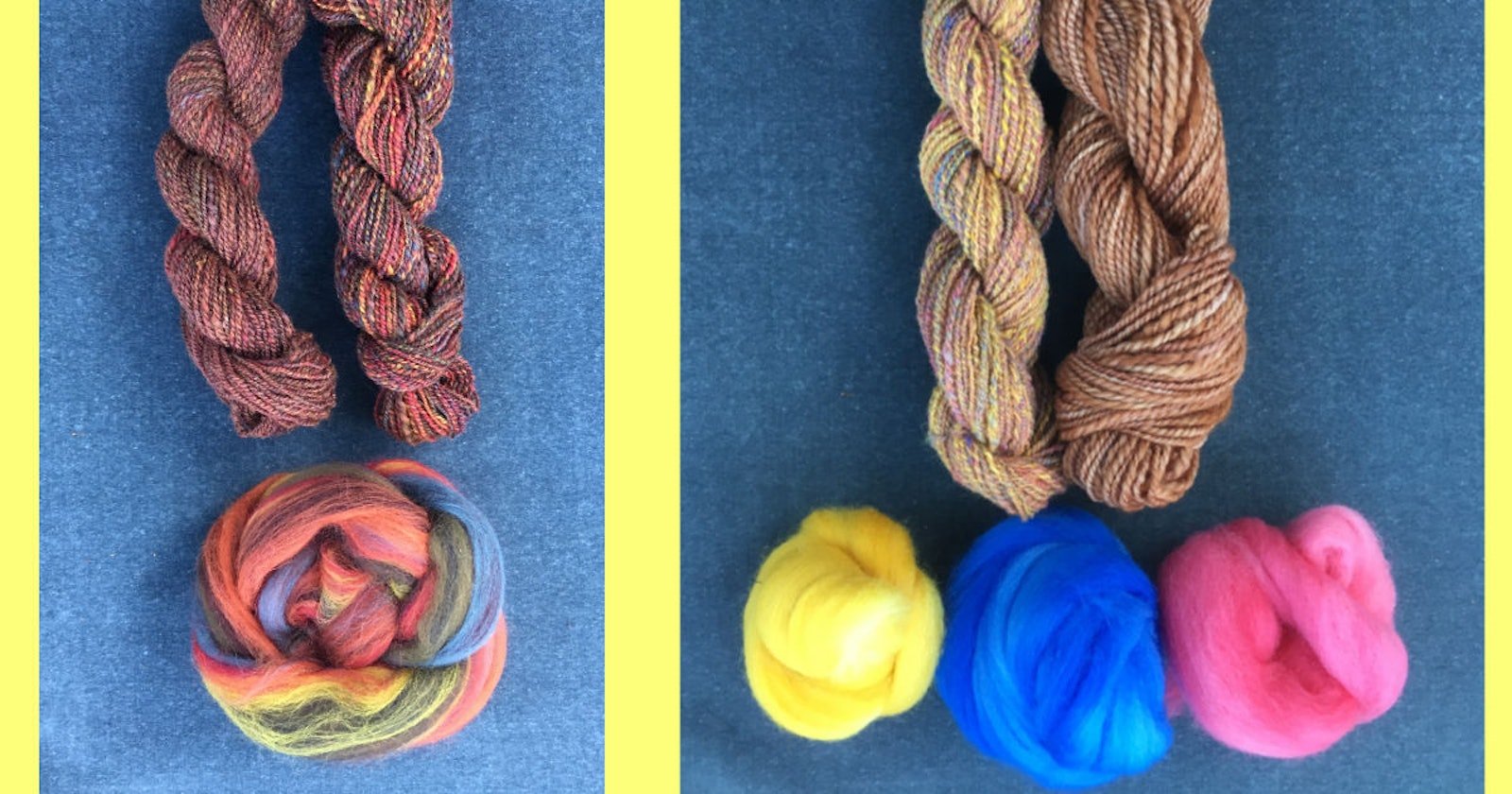Lucky is the weaver who spins! Handspinners have access to every fiber imaginable and can choose which of those fibers to use, what colors to make them, and how they will be spun. Yes, weavers have access to a lot these days, but they don’t have nearly as many choices as handspinners. Handspinners who weave can create the most personal of textiles and weave that which no one else can.
Handspinners can personalize their yarns in at least three ways. The most obvious is with color, not only with dyed colors but with myriad natural colors. Colors in nature are not solid, flat, or uniform, and handspinners can blend colors just as nature does. Each blend gives a completely different look to the yarn, even if it “reads” as a single color in the fabric. We can blend the colors only slightly, giving striations to the yarn, or quite homogeneously, making a heathered-looking fabric. One will show more color variation from a distance, and the other will only show its colors when the viewer gets up close.
Commercially dyed fibers are a uniform color throughout the cone, skein, or batch. Independent dyers have a better chance of getting depth and richness in their colors by making “almost solids”: yarns with intentional color variation but that appear as a single color. But handspinners? We can blend any color fiber in repeatable percentages, just as dyers blend dyestock colors to get the exact hue they want. The resulting blend of colors is rich up close yet can be subtle in the finished fabric.
Another handspinners’ advantage is fiber choice. Today, we have access to more fibers than any handspinners in history: plant fibers, animal fibers, and man-made fibers, from fine to coarse, and we can blend the fibers. Silk and wool are a popular fiber blend, but what wool, and which silk, and what percentage of each in the blend? Merino and silk blends can be found commercially spun, usually in an 80/20 blend of wool and silk, respectively. In finishing, the yarn has a predictable shrinkage. But what if one set of yarns in a fabric such as deflected doubleweave was merino and silk and the other Cormo and silk? Cormo shrinks more in the finishing process than merino, enhancing the differential shrinkage of the weave structure! What if one yarn was a blend of 80% wool and 20% silk and the other a 50/50 blend? Would the latter shrink less? There is a whole world of sampling to do by choosing which fibers to spin together and in what proportions.
Monocromatic handspun yarn and roving has a slightly heathered look to it.
Finally, handspinners can choose how to spin to enhance the woven fabric with just the right yarn. Will it be a singles, a two-ply, or a three-ply yarn? What direction will the twist be inserted? Will there be texture in the yarn design, and will it be lofty, smooth, tightly twisted, or just barely held together? Handspinners can determine all of these things to achieve just the right yarn for a woven project. A two-ply yarn would be sett and woven differently than three plies of the same yarn, even if the singles for each were spun exactly the same.
The yarns resulting from a handspinner’s efforts can be unique but repeatable, exceptionally suited to the fabric we are weaving, and ever changing. We have the best of all worlds, with unlimited options, enough to sample and keep us busy for a lifetime, and nothing whatsoever to hold us back from making the most superb and thoughtful fabrics.
Happy Spinning,
Sara Lamb


